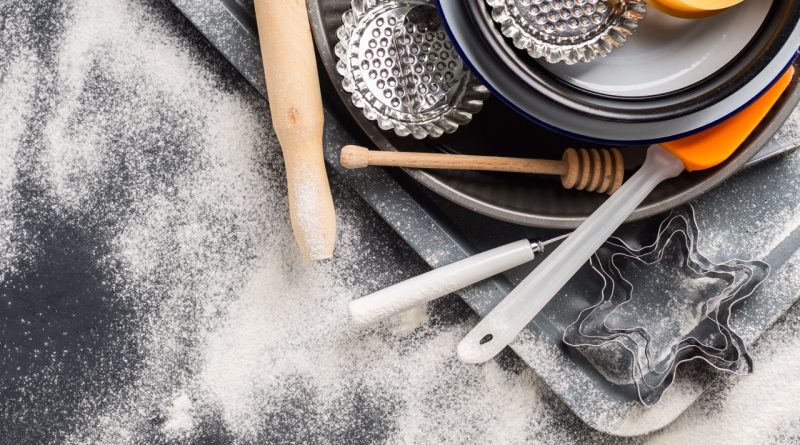Zwilling’s Signature Handle Ergonomics Explained
===
In the world of culinary tools, the design and ergonomics of knife handles play a crucial role in enhancing the cooking experience. Zwilling, a renowned brand established in 1731, has mastered the art of knife-making, focusing on not just the blade but also the handle’s ergonomics. The Signature handle, in particular, stands out for its comfortable grip and superior control. This article explores the design principles behind Zwilling’s handles, how ergonomics contribute to a better cooking experience, the materials used, and practical tips for selecting the right knife for your needs.
Understanding the Design Principles of Zwilling Handles
Zwilling’s Signature handles are meticulously crafted to align with the natural grip of the hand. The design emphasizes a seamless transition between the handle and the blade, allowing for a balanced feel during use. The contours of the handle are designed to fit the palm comfortably, reducing fatigue during extended periods of chopping or slicing. This ergonomic design supports the wrist’s natural alignment, minimizing strain and enhancing overall efficiency.
Another key design principle is the handle’s weight distribution. The Signature handle is engineered to provide a satisfying heft that contributes to the knife’s overall balance. A well-balanced knife not only feels more comfortable but also allows for finer control, especially when executing intricate cuts. This balance is crucial for professional chefs and home cooks alike, as it aids in achieving precision and consistency in food preparation.
Finally, Zwilling incorporates a full tang design, where the blade extends through the entire length of the handle. This construction not only enhances strength and durability but also ensures that the handle remains stable and secure during use. By focusing on these design principles, Zwilling has created a handle that not only looks elegant but also performs exceptionally well in a variety of culinary tasks.
How Ergonomics Enhance Comfort and Control in Cooking
Ergonomics is the science of designing tools and environments that optimize human performance and comfort. In the context of Zwilling’s Signature handles, ergonomic design enhances both comfort and control, essential elements in a successful cooking experience. A well-designed handle allows the user to maintain a firm grip without excessive pressure, reducing the likelihood of slippage and accidents.
The curvature and texture of the Signature handle contribute significantly to its ergonomics. The subtle grooves and soft touch materials provide a non-slip surface, allowing cooks to maintain a secure grip even when hands are wet or greasy. This feature is particularly beneficial for tasks that require precision, such as filleting fish or julienning vegetables, where control is paramount.
Moreover, ergonomic handles can significantly reduce the risk of repetitive strain injuries, a common concern for those who spend long hours in the kitchen. By aligning the knife with the user’s natural grip, Zwilling’s design minimizes the stress on the wrist and fingers, allowing for longer and more enjoyable cooking sessions without discomfort. This thoughtful approach to ergonomics not only enhances performance but promotes long-term health and well-being for avid cooks.
Key Materials Used in Zwilling’s Signature Handles
The durability and comfort of Zwilling’s Signature handles can be attributed to the high-quality materials used in their construction. Most notably, the handles are crafted from synthetic materials that provide excellent grip and resilience. These materials are not only strong and durable but also resistant to heat, moisture, and impact, ensuring that the handles can withstand the rigors of daily use in a busy kitchen.
In addition to synthetic materials, Zwilling often incorporates a special type of polymer that enhances the handle’s tactile feel. This polymer is designed to provide a soft-touch surface that encourages a relaxed grip, reducing fatigue during extended use. The combination of these materials not only improves the overall aesthetic of the knife but also contributes to its functionality, making it a reliable tool for chefs of all skill levels.
Lastly, Zwilling is committed to sustainability and environmental responsibility. The materials used in the Signature handles are often sourced from eco-friendly suppliers, aligning with modern values of sustainability in the culinary world. This not only ensures that users have a high-quality product but also supports ethical practices in manufacturing, making Zwilling knives a conscientious choice for environmentally-aware consumers.
Practical Tips for Choosing the Right Knife for You
When selecting a knife, consider the specific tasks you will be performing. For general use, a chef’s knife is versatile and essential for a variety of cutting techniques. Look for a knife that feels comfortable in your hand, and pay attention to the handle’s design and ergonomics. A knife that fits well in your grip can significantly enhance your cooking efficiency and enjoyment.
Another key factor is the weight of the knife. Heavier knives may offer more power for cutting through dense ingredients, while lighter knives can provide greater control for delicate tasks. It is advisable to handle different knives to determine which weight feels most comfortable and effective for your cooking style.
Lastly, consider investing in quality over quantity. A single high-quality knife, such as those offered by Zwilling, can outperform several lesser-quality options. A well-made knife is not only more efficient but also lasts longer, providing better value over time. By taking these practical tips into account, you can choose the right knife that complements your cooking skills and preferences.
===
In conclusion, Zwilling’s Signature handle ergonomics represent a thoughtful synthesis of design, material, and functionality aimed at enhancing the culinary experience. By understanding the principles behind the handle’s design, the benefits of ergonomics, and the quality of materials used, cooks can make informed decisions that improve their kitchen performance. Whether you are a seasoned chef or a home cook, investing in a high-quality knife designed with ergonomic principles can make a significant difference in your cooking journey.
